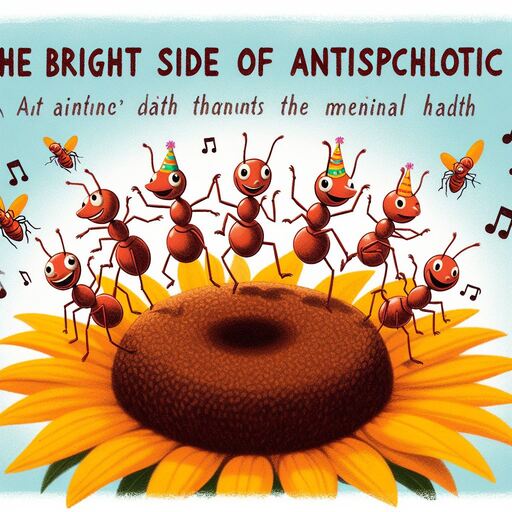The Bright Side of Antipsychotics
The Bright Side of Antipsychotics
In the realm of mental health treatment, antipsychotic medications often carry a weighty connotation, conjuring images of symptom management and clinical intervention. However, beyond their pharmacological efficacy lies a profound narrative of resilience, hope, and the transformative power of illumination. This article seeks to delve into the bright side of antipsychotics, exploring their multifaceted impact on individuals, communities, and the broader landscape of mental health care.
At the heart of the bright side of antipsychotics is their ability to provide stability and clarity in the midst of chaos and confusion. For individuals grappling with conditions such as schizophrenia, bipolar disorder, or severe depression with psychotic features, the world can often appear distorted and overwhelming. Antipsychotics serve as beacons of light, offering a sense of grounding and coherence amidst the tumult of mental illness. By targeting neurotransmitters in the brain, particularly dopamine, these medications help individuals regain a sense of control over their thoughts, emotions, and perceptions, enabling them to navigate their reality with confidence and autonomy.
Moreover, the transformative power of antipsychotics extends beyond mere symptom management to encompass holistic healing and personal growth. By alleviating distressing symptoms of psychosis, these medications create space for individuals to explore new avenues of self-discovery, purpose, and meaning. Through the therapeutic support of antipsychotic therapy, individuals embark on a journey of inner exploration and empowerment, illuminating new pathways towards resilience, fulfillment, and inner peace.
Central to the bright side of antipsychotic therapy is its role in fostering connections and strengthening relationships within communities. Mental illness can often isolate individuals from their loved ones, creating barriers to communication and understanding. Antipsychotic therapy serves as a bridge, facilitating open dialogue and fostering empathy and compassion among family members, friends, and caregivers. By illuminating the shared humanity that binds us all, antipsychotics promote social inclusion and support networks that are essential for sustainable recovery and well-being.
Furthermore, the bright side of antipsychotics lies in their capacity to challenge stigma and promote destigmatization surrounding mental health. For too long, misconceptions and fear have shrouded conversations about psychosis and psychiatric treatment. Antipsychotics challenge these narratives, inviting individuals to embrace their mental health journeys with courage and resilience. By reframing the narrative around mental illness as one of strength and resilience rather than weakness and vulnerability, antipsychotic therapy empowers individuals to step into the light and share their stories with pride and authenticity.
The bright side of antipsychotic therapy also extends beyond individual experiences to encompass broader societal transformations. By advocating for greater access to mental health care and challenging systemic barriers to treatment, individuals who embrace antipsychotic therapy become agents of change in their communities. They illuminate the path towards a future where mental health is prioritized, stigma is dismantled, and all individuals have the opportunity to thrive and flourish.
In conclusion, the bright side of antipsychotic therapy is a testament to the resilience of the human spirit and the transformative power of illumination. Through courage, perseverance, and the therapeutic support of these medications, individuals facing mental health challenges embark on a journey of healing, empowerment, and social change. As they illuminate their worlds with hope, compassion, and resilience, they inspire others to embrace their own mental health journeys with courage and grace, shaping a future where understanding and compassion prevail.
The Bright Side of Antipsychotics

